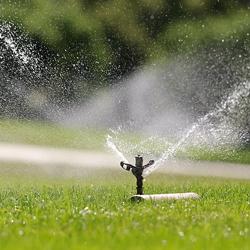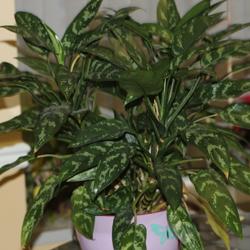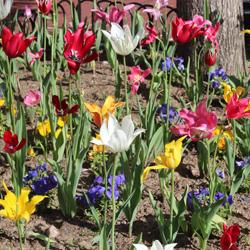August is typically the hottest month in most of the United States. While you can expect an abundant harvest from gardens this month, lawns will start showing signs of heat stress. To ensure a healthy harvest and survival of lawns this month, take note of the following items:
Lawn Care
- Train your lawn to grow deep roots by mowing high and watering deeply but infrequently.
- If you want your lawn to remain green throughout summer. Here’s a video featuring simple ways to tell if your lawn needs to be watered. Otherwise, it’s ok to let the lawn go dormant during dry conditions.
- Mow your lawn only when needed and use a sharp blade. During the summer, your turfgrass may go dormant and require little to no mowing at all.
- Try to avoid compacting the soil in high traffic areas. This can damage turfgrass and lead to weeds.
- Hand-weed when possible. If there is an area of your lawn with excess weeds, wait until cooler weather returns before applying weed controls. Weed controls applied in the summer may put your lawn under unnecessary stress.
- Apply an organic-based fall fertilizer to the lawn towards the end of the month. Organics are “slow-release” fertilizers, and won’t burn plants like synthetic fertilizers.
- If you plan on aerating later in the month, be sure to give the lawn a good watering two days before the aeration so the ground is nice and soft but not soaking wet. This will allow the aeration service to be more effective.
- If needed, purchase and apply Milky Spore to help control white grubs, which do the most damage in late summer and fall.
Indoor Plant Care
- Feed indoor plants with an organic fertilizer.
- Re-pot any plants that have grown too large for their containers.
- Continue to water indoor plants. If you live in a dry climate, consider giving indoor plants an occasional misting to increase humidity.
Tree & Shrub Maintenance
- In the heat of the summer, make sure trees and shrubs get watered deeply once a week.
- Remove any suckers that may be present growing from the bottom of trees or shrubs (such as crabapples or roses) with a pair of garden sheers.
- Prune damaged, diseased, or dead branches to avoid having them fall during storms.
Fruit and Vegetable Gardening
- Begin planning and planting your fall vegetable garden.
- Sow lettuce and spinach seeds for fall harvesting.
- Dig up onions and cure or dry them out.
- Harvest fruits and vegetables and start to can or freeze excess.
- Give vegetable gardens an inch of water every week. When possible, water in the early morning and avoid getting the leaves wet.
- Consider saving seeds from open-pollinated vegetable plants to use next spring.
- Check cold frames to ensure they’re ready for the first frost of the year. Cold frames increase in price closer to the peak season so it’s best to repair or replace anything broken as soon as possible.
Flower & Bulb Preparation
- Continue treating roses with Protilizer.
- Stop feeding roses by August 15th.
- To keep container gardens and hanging baskets looking beautiful, water them at least once a day and remove spent blooms as needed.
- Feed hanging baskets and container gardens every two weeks.
- Order spring bulbs now to get the best selection and have them ready to plant.
- If annuals are getting “leggy” cut them back for fall growth.
- Plant lilies, irises, hostas, perennials, trees, and shrubs.
Maintenance & Other Items
- Take photos and make notes for next year. It’ll make the garden planning process a lot easier.
- Ideal temperatures for a compost pile hover around 160°F (71°C). In the hottest months of the summer, a pile could reach temperatures of up to 200°F if not properly maintained. This can kill beneficial microbes and possibly cause a compost fire. To avoid this, turn your pile regularly and ensure it stays properly moist.
- Save on water bills by installing a rain barrel or investing in a similar way to collect rainwater.
- Keep up with weeding.
- Maintain bird feeders and ensure baths are clean and full.
- Check local garden centers for any price reductions on remaining plants.




